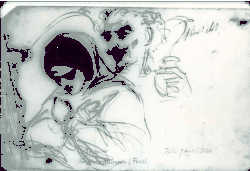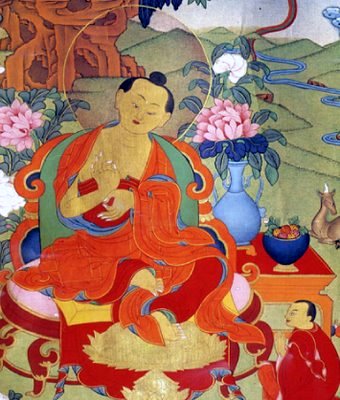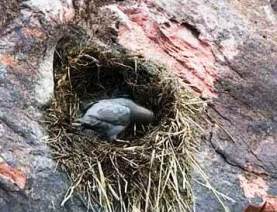
HPB Doodlebook
Okay, you’re at a boring meeting and your pen starts playing in the margins of your paper. A distraction? No. Doodling can actually help you remember important information.
“When the brain lacks sufficient stimulation,” psychology professor Jackie Andrade said recently on NPR, “it essentially goes on the prowl and scavenges for something to think about. Typically what happens in this situation is that the brain ends up manufacturing its own material.”
The material the brain makes up is doodles.

Jackie Andrade
In Andrade’s study, recently published in the journal Applied Cognitive Psychology, she found that when subjects were given a doodling task while listening to a dull phone message, they had a 29% improved recall compared to their non-doodling counterparts.
Forty volunteers were asked to listen to a two-and-a-half-minute tape giving several names of people and places, and were told to write down only the names of people going to a party. Twenty of the participants were asked to shade in shapes on a piece of paper at the same time, but paying no attention to neatness.
After the tape had finished, all participants in the study were asked to recall the eight names of the party-goers which they were asked to write down, as well as eight additional place names which were included as incidental information. The doodlers recalled on average 7.5 names of people and places compared to only 5.8 by the non-doodlers.
“This study suggests that in everyday life doodling may be something we do because it helps to keep us on track with a boring task,” Andrade says, “rather than being an unnecessary distraction that we should try to resist doing.”
The Comte de St. Germain

I don’t know if 18th century mystic and alchemist the Comte de St. Germain doodled, but he certainly had mastery of mind and spirit…and the pen. “He was ambidextrous, and could write a poem with one hand while he framed a diplomatic paper with the other,” Theosophy records.
The article also says that he could “merely glance at a paper, and days afterward repeat its contents without missing a word” and that he “frequently read sealed letters without touching them and was known to answer questions before they had been put into words.” (Theosophy, Vol. 27, No. 1, November, 1938, pp. 3-9.) He knew how to use his faculties, spiritual and other, optimally to push the envelope of his creative expression.
Doodler Defense

W. Q. Judge
William Judge defends the doodler—a good 116 years before Andrade’s study—because the doodler uses imagination. “The faculty of imagination has been reduced to a very low level by modern western theorisers upon mental philosophy,” he says in his article Imagination and Occult Phenomenon:
“It is ‘only the making of pictures, daydreaming, fancy and the like’: thus they have said about one of the noblest faculties in man. In Occultism it is well known to be of the highest importance that one should have the imagination under such control as to be able to make a picture of anything at any time, and if this power has not been so trained the possession of other sorts of knowledge will not enable one to perform certain classes of occult phenomena….
“The Adepts who consciously send messages from a distance or who impress thoughts or sentences on the mind of another at a distance are able to do so because their imagination has been fully trained….”
Imagination and Precipitation

Mahatma Letters
Judge continues: “Take the case of precipitation. In the first place, all the minerals, metals, and colored substances any one could wish for use are in the air about us held in suspension. This has long been proved so as to need no argument now. If there be any chemical process known that will act on these substances, they can be taken from the air and thrown down before us into visibility. this visibility only results from the closer packing together of the atoms of matter composing the mass.
“….Occultism has a knowledge of the secret chemistry of nature whereby those carbons and other substances in the air may be drawn out at will either separately or mixed. The next step is to find for these substances so to be packed together a mold or matrix through which they may be poured, as it were, and, being thus closely packed, become visible. Is there such mold or matrix?
“The matrix is made by means of the trained imagination. It must have been trained either now or in some other life before this, or no picture can be precipitated nor message impressed on the brain to which it is directed.”
Precipitating Messages
“But, of course, in the case of sending and precipitating on to paper a message from a distance, a good many other matters have to be well known to the operator. For instance, the inner as well as the outer resistance of all substances have to be known, for if not calculated they will throw the aim out, just as the billiard ball may be deflected if the resistance of the cushion is variable and not known to be so by the player.
“And again, if a living human being has to be used as the other battery at this end of the line, all the resistances and also all the play of that person’s thought have to be known or a complete failure may result.
“This will show those who inquire about phenomena, or who at a jump wish to be adepts or to do as the adepts can do, what a task it is they would undertake. But there is still another consideration, and that is that inasmuch as all these phenomena have to do with the very subtle and powerful planes of matter it must follow that each time a phenomenon is done the forces of those planes are roused to action, and reaction will be equal to action in these things just as on the ordinary plane.”
HPB’s Precipitation Experiment

HPB Doodle
“An illustration will go to make clear what has been said of the imagination. One day H.P. Blavatsky said she would show me precipitation in the very act. She looked fixedly at a certain smooth piece of wood and slowly on it come out letters which at last made a long sentence. It formed before my eyes and I could see the matter condense and pack itself on the surface. All the letters were like such as she would make with her hand, just because she was making the image in her brain and of course followed her own peculiarities. But in the middle, one of the letters were blurred and, as it were, all split into a mass of mere color as to part of the letter.
“‘Now here,’ she said, ‘I purposely wandered in the image, so that you could see the effect. As I let my attention go, the falling substance had no matrix and naturally fell on the wood any way and without shape.'”
Snake Charmer

Judge then recounts his interview with a snake charmer; that is, someone who makes a crowd of people believe there is a snake with him, where no such snake exists at all:
“The man replied that he was able to see through it, so that for him it looked like the shadow of a snake, but that if he had not done it so often he might be frightened by it himself. The process he would not give, as he claimed it was a secret in his family. But anyone who has made the trial knows that it is possible to train the imagination so as to at will bring up before the mind the outlines of any object whatsoever, and that after a time the mind seems to construct the image as if it were a tangible thing.
“But there is a wide difference between this and the kind of imagination which is solely connected with some desire or fancy. In the latter case the desire and the image and the mind with all its powers are mixed together, and the result, instead of being a training of the image-making power, is to bring on a decay of that power and only a continual flying to the image of the thing desired. This is the sort of use of the power of the imagination which has lowered it in the eyes of the modern scholar, but even that result would not have come about if the scholars had a knowledge of the real inner nature of man.” (Path, December 1892.)
© Kara LeBeau 2009 All rights reserved

Nicholas Roerich -"Rocks of Lahul"
Other related resources: Check out the gallery of presidential doodles and other doodle news at NPR.






 A
A

 LOOKING past our relatively short physical lives on Earth, Theosophy views the soul as eternal. Further, we don’t just ‘have’ a soul, we are souls, the wisdom tradition teaches.
LOOKING past our relatively short physical lives on Earth, Theosophy views the soul as eternal. Further, we don’t just ‘have’ a soul, we are souls, the wisdom tradition teaches.


 An old strawberry pot was left near my back door when I moved in years ago. The base of it was actually broken clean from the rest of the pot, but I figured it was worthy enough to plant morning glories in for summer color.
An old strawberry pot was left near my back door when I moved in years ago. The base of it was actually broken clean from the rest of the pot, but I figured it was worthy enough to plant morning glories in for summer color.

















 OUR friends at
OUR friends at 











 To keep his soil fertile, Washington rotated his crops. He carefully mapped out, for example, what would successively grow in each of his seven fields from 1793 to 1799. He assigned one field for corn and potatoes, one field for buckwheat, two fields for wheat, and three fields for clover or grass.
To keep his soil fertile, Washington rotated his crops. He carefully mapped out, for example, what would successively grow in each of his seven fields from 1793 to 1799. He assigned one field for corn and potatoes, one field for buckwheat, two fields for wheat, and three fields for clover or grass.




